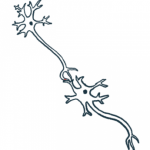ACTRIMS 2023: Loss of myelin in spinal cord tied to MS disability
More loss in cervical region also linked to worse motor function

A greater loss of myelin — the protective coating around nerve fibers — in the part of the spinal cord found in the neck was associated with worse disability in people with multiple sclerosis, data from a new study showed.
More substantial myelin loss in this region, known as the cervical spinal cord, also was tied to declines in motor function and dexterity.
The study used an advanced MRI technique called magnetization transfer ratio (MTR), which assesses overall myelin integrity. Myelin loss was particularly evident in patients with primary progressive MS (PPMS), which is characterized by steadily worsening symptoms over time.
Lisa Eunyoung Lee, a PhD student at the University of Toronto, in Canada, presented the findings at the Americas Committee for Treatment and Research in Multiple Sclerosis (ACTRIMS) Forum 2023, held Feb. 23-25, in San Diego and virtually.
Her study, titled “Myelin Abnormalities in the Cervical Spinal Cord is Associated with Clinical Disability Across MS Subtypes,” was funded by the MS Society of Canada, Biogen Canada, Roche, and the Brain Canada Foundation.
Detecting the loss of myelin in the cervical spinal cord
MS is marked by erroneous autoimmune attacks on myelin, the fatty substance that surrounds and protects nerve cells and ensures efficient cell-to-cell communication. As a result of these damaging immune reactions, lesions — areas of tissue damage and inflammation — form throughout the brain and spinal cord.
The cervical spinal cord, which forms the neck region of the spine closest to the skull, is one area that’s particularly affected in MS. A greater degree of damage in this area has been associated with a more aggressive disease course and more severe disability accumulation.
“If the cervical spinal cord is damaged in MS, worse prognosis can be more likely,” Eunyoung said.
That relationship means that studying the cervical region of the spinal cord is important for understanding disease progression, especially in progressive MS patients for whom few treatment options exist.
However, the number of MRI studies evaluating the spinal cord is fewer than 20% of the number of studies in the brain, Eunyoung noted, adding that technical challenges related to how small the cord is limit researchers’ ability to study it.
But recent technological advances have made it easier to study, according to Eunyoung. One of these approaches is MTR, an advanced MRI-based imaging technique to quantify myelin integrity.
Such approaches also may have benefit for progressive MS clinical trials, which employ clinical measures of disability that progress very slowly. That means that large numbers of patients have to be followed for a long period of time to get a good readout about whether a treatment is working.
Moreover, standard MRI-based surrogates, such as lesion burden, don’t necessarily correlate well with clinical disability.
“For us to develop better treatments for progressive MS, we need better ways to monitor progression in MS,” Eunyoung said.
Now, Eunyoung and her colleagues set out to understand whether MTR in the cervical spinal region is associated with clinical disability across MS subtypes.
Their analysis involved 202 patients with relapsing-remitting MS (RRMS), 48 people with PPMS, and 52 individuals with radiologically isolated syndrome (RIS). In RIS, brain lesions indicative of MS are present on MRI scans, but patients have not experienced clinical symptoms of the disease. There also was a control group of 42 healthy people.
Participants were all part of the CanProCo study, a Canadian initiative launched in 2019 to better understand MS progression.
Greatest loss of myelin seen in PPMS
Results showed that MTR values were generally lower in PPMS patients compared with all other three groups across a number of regions of the cervical spinal cord. This reflects greater myelin loss in progressive MS.
MTR values also were significantly lower among RRMS patients than in controls in several evaluated regions, although myelin integrity was always worse in the PPMS group.
If the cervical spinal cord is damaged in MS, worse prognosis can be more likely.
Importantly, MTR values were inversely correlated with overall disability scores, as assessed with the Expanded Disability Status Scale (EDSS), in both PPMS and RRMS patients. On the EDSS, a higher score indicates worse disability. So, in this study, the greater the myelin loss, the more disability a patient had accumulated.
Similarly, PPMS patients with more severe myelin loss performed significantly worse on tests of walking function and finger dexterity. However, this association was observed for all regions except the dorsal column in the motor function tests and only the dorsal column MTR was significantly associated with dexterity scores.
That finding is consistent with the dorsal column’s known importance for sensory functions involved in manual dexterity, Eunyoung noted.
Overall, the findings suggest that myelin loss in the cervical spinal cord, as assessed by MTR, is consistent with a progressive disease course and greater functional disability.
“We are now looking at MTR changes over time in this cohort to better understand the core [disease mechanisms] contributing to disease progression in MS,” Eunyoung concluded.
Note: The Multiple Sclerosis News Today team is providing in-depth coverage of the ACTRIMS Forum 2023 Feb. 23–25. Go here to see the latest stories from the conference. Follow along on Facebook, Twitter, and Instagram for live updates using the hashtag #actrims2023.







